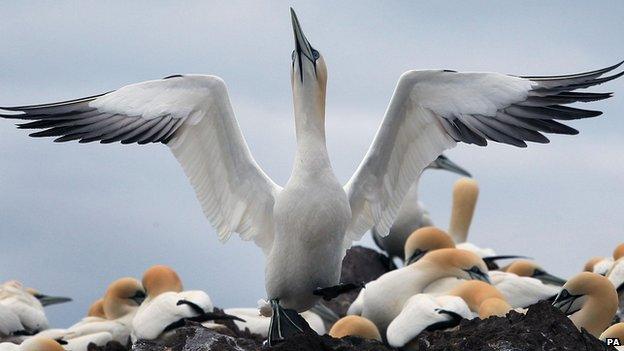Plastic found in 'almost 100%' of Alderney's gannet nests
- Published
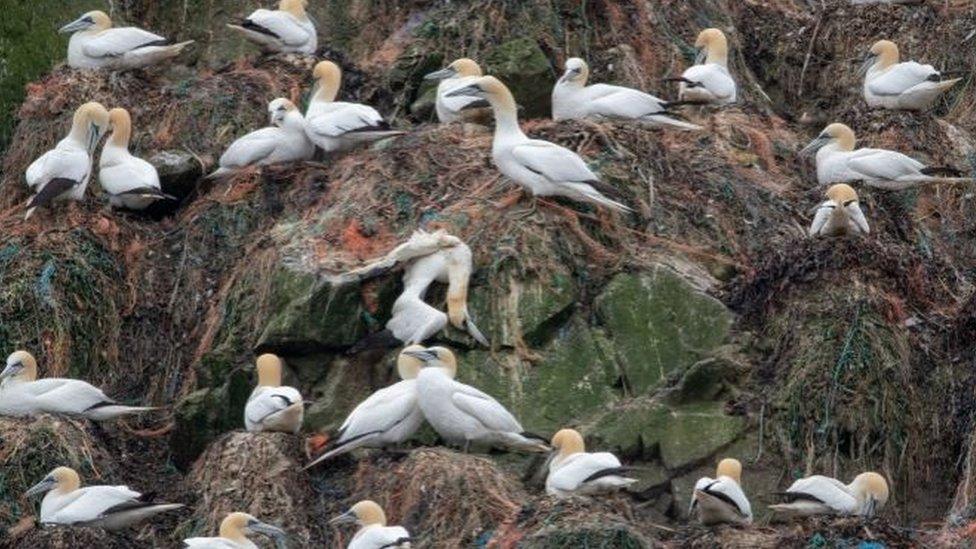
Alderney's Wildlife Trust has been monitoring plastic levels on the islands gannet colonies
Nearly all of Alderney's 8,000 gannet nests are contaminated with plastic pollution, island conservationists say.
As recently as 20 years ago, only small quantities were seen in the nests, the Wildlife Trust said.
The plastic build-up in the breeding colonies is killing the seabirds, with some entangled gannets found hung or missing legs, it added.
Around 2% of the global gannet population is thought to visit Alderney - the northernmost Channel Island.
The plastics are largely from fishing industry rope or line, the trust said.
The island is 10 miles (15km) from France and home to 2,000 people.
The Wildlife Trust's study found, external the plastic build-up is posing a "significant risk to chicks and adults alike as they become entangled or end up eating it".
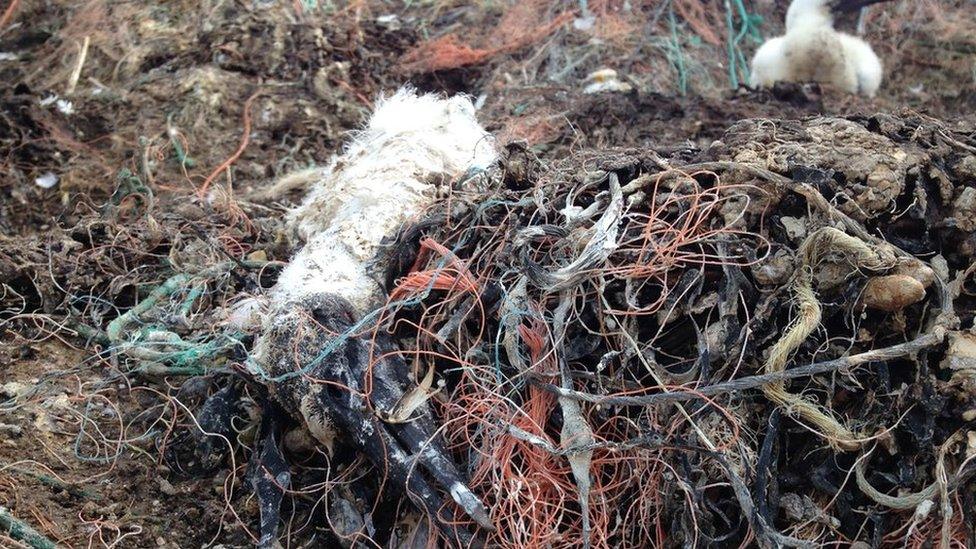
This dead gannet was found caught in nests built of fishing line
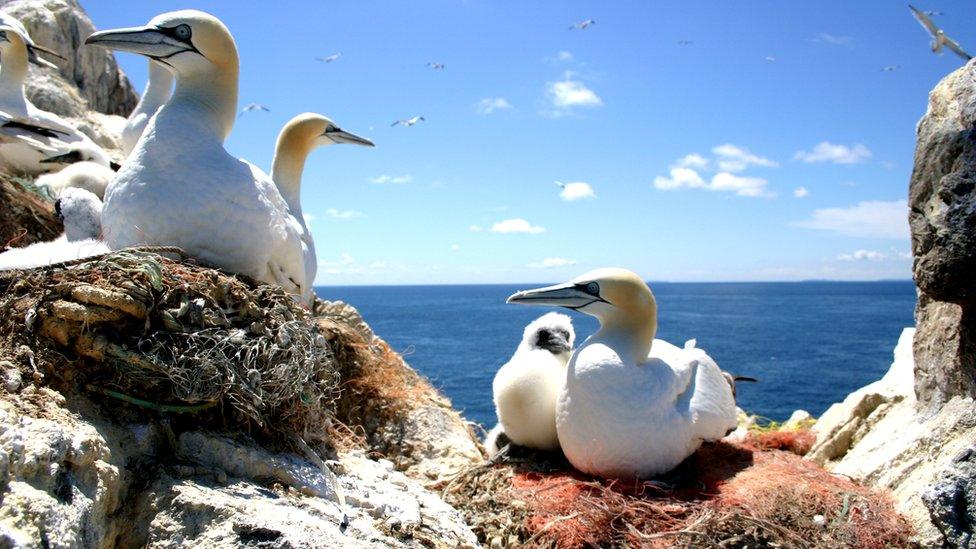
Gannets are known to forage as far as 20 nautical miles to collect nesting materials
"Over the last 20, 30 years we've gone from little bits of plastics here and there to every nest now, pretty much, having a significant quantity of plastic in," the trust's Roland Gauvain said.
"It's not uncommon to find gannets hung - to lose legs, to find their wings entangled."
The trust's study highlighted concerns over plastic pollution across the British Isles, along with sewage spills and a build up of waste on beaches.
Alderney's gannet population is still growing, but Mr Gauvain said the island's position in the English Channel meant it was particularly vulnerable to plastic pollution.
"Most of these plastics aren't going to be coming from Alderney," he said.
"We have a population of 2,000 people and we're talking about upwards of 8,000 nests on the colonies.
"Really, the tale is that we are impacting our waters so much more than we ever realised."
- Published22 June 2015
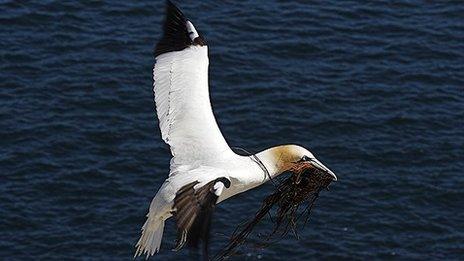
- Published7 June 2011

- Published14 December 2014
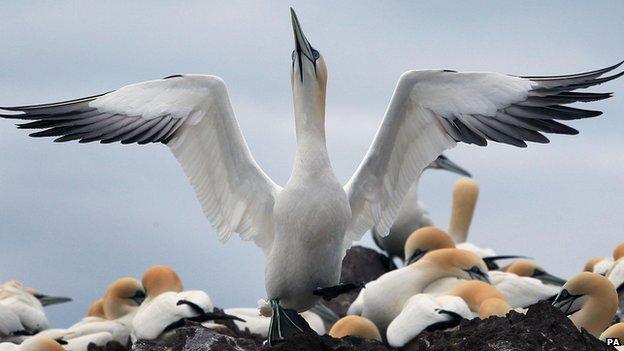
- Published31 March 2014
